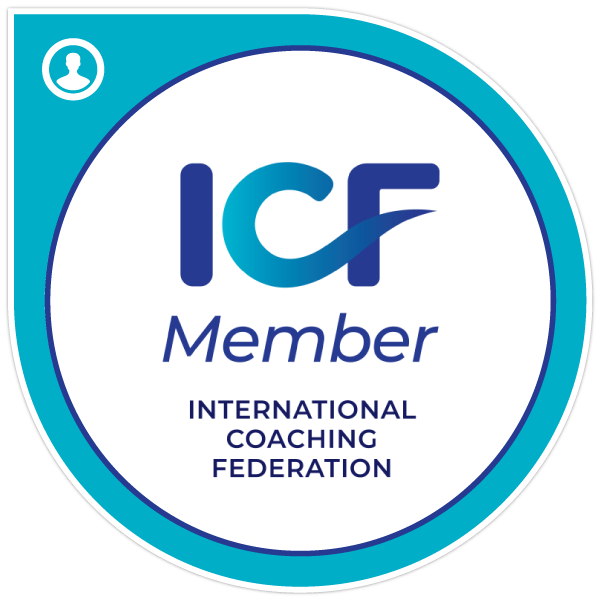Are We Washing The Gray Out Of Our Organizations?
Rich Baron • February 1, 2024
Like It or Not, Age Discrimination Is Alive and Well
I am in a unique position. As both an executive coach, as well as a job coach, I have been able to see this issue from both sides. The problem that I am referring to is age discrimination of older workers. And when I say older workers, I mean anyone over 40 years of age, which is when age discrimination starts to raise its ugly head.
Despite legal protections in place, age discrimination remains a prevalent issue in the workplace, particularly for older workers. As both an executive coach and a job coach, I have witnessed numerous instances where highly experienced and qualified individuals are overlooked or undervalued simply because of their age.
In 1967, the Age Discrimination in Employment Act (ADEA) was created to protect people from discrimination and harassment in the workplace. While this was a very positive step toward protecting workers’ rights, age discrimination and harassment still occur in every industry and sector today.
In a survey conducted by AARP, two out of three workers aged 45 and older said they had seen or experienced age discrimination at work. AARP also found that there are significant differences between the genders when it comes to age discrimination. In the same age group as the previous survey, 72% of women said they think people face age discrimination at work while only 57% of men agreed.
Flawed Perceptions
Some of the remarks that I have heard either firsthand, or from my clients can come from flawed perceptions, age bias, or complete ignorance of the value that older workers bring to the workforce. Here are some examples:
- They do not have the same energy as younger workers.
- They will not be comfortable working for a younger boss.
- Their past salary was too large; therefore, they will not be happy with what we offer.
- They are too set in their ways and will not have the flexibility to work with a younger team.
- Their skills are behind the times.
- They are not familiar with current technology.
- They will have more health issues and miss more time than younger workers.
These stereotypes, however, are often not based on actual evidence and fail to acknowledge the wealth of experience and wisdom older workers can bring to an organization. Research has shown that older workers tend to have lower rates of absenteeism, greater productivity, and a stronger work ethic compared to their younger counterparts.
Furthermore, age discrimination not only affects individuals financially and emotionally, but it also has broader societal implications. In a time of increasing longevity, organizations must make the most of the diverse skills and perspectives of all age groups. By dismissing older workers, businesses miss out on a significant talent pool and deprive themselves of valuable insights and expertise.
Too Old to Play in the Sandbox
The tech industry has been experiencing tremendous growth in recent years, and my home state of Utah has become a significant player in this sector. As a job coach, my role is to assist individuals in their career development and help them navigate the job market effectively. The majority of the job seekers I work with seek roles in software development, data analysis, cybersecurity, web design, and other technology-related fields. With the presence of prominent tech companies and startups in Utah, including Adobe, Qualtrics, and Pluralsight, there is a wide variety of positions available. That is if you are 35 or younger. According to Smart Insights, here are the current average ages of those employees that make up these tech industry giants:
- AOL - 27
- Meta (Facebook) - 28
- LinkedIn - 29
- Salesforce - 29
- Google - 30
- Apple - 31
- Amazon - 31
- Yahoo - 31
- eBay - 32
- Adobe - 33
- Microsoft - 33
- Dell - 36
- IBM - 38
- Oracle - 39
- HP - 39
The tech industries are not the only areas where younger employees are hired over older employees. The Bureau of Labor Statistics reports the following median ages for a selection of industries:
- Hospitality - 31
- Wholesale & Retail - 39
- Construction - 42
- Professional & Business Services - 42
- Education - 43
- Financial - 44
- Manufacturing - 44
- Transportation & Utilities - 45
Based on these findings, it truly appears that we are indeed washing the gray out of our businesses.
Leadership and the Age Factor
According to a survey conducted by groups such as Deloitte, HBR, Kaiser Leadership Solutions, and Gallup, the global state of leadership
is in serious trouble. These studies show that as many as 75% of all global leaders are failing, and some studies show that less than 10% of leaders have the versatility and timing to be effective in any type of organizational crisis. As an executive coach working with several organizations both locally and globally, I can attest to the fact that there is a serious issue in organizations where leadership development has become an afterthought instead of a critical priority.
In a column for the Harvard Business Review Blog Network, Jack Zenger unveiled a startling and troubling fact: We wait too long to train leaders. Citing research from his consulting agency, he revealed that in their database of some 17,000 worldwide leaders participating in their training programs, the average age for first-time leadership training was 42. More than half were between 36 and 49. Less than 10 percent were under 30, and less than 5 percent were under 27.
The results also pointed to another disturbing fact: the average age of supervisors in those firms was 33. The typical individual in those companies became a supervisor around age 30 and remained in the role for nine years. The result? Most of these individuals are not getting any leadership training at all as supervisors. They have been operating organizations untrained, on average, for over a decade.
Based on these surveys, coupled with the average ages in today's organizations, is it any wonder that stress, burnout, toxic leadership, substandard culture, and turnover in leadership roles are higher than it has ever been?
The Case for More Gray in the Workplace
One of the main reasons employers practice age discrimination is the assumption that older workers are less productive and less adaptable to new technologies. However, studies have shown that older workers bring a wealth of experience, expertise, and stability to the workplace. They often have a strong work ethic, and excellent problem-solving skills, and are more likely to stay with an organization long-term.
Moreover, older workers tend to have lower turnover rates, reducing recruitment and training costs for employers. They also have a lower likelihood of engaging in risky behavior or making impulsive decisions, contributing to a more stable and reliable work environment.
Another unfounded assumption is that older workers are not as capable of learning new skills or keeping up with advancements in technology. In reality, many older workers have a strong desire to learn and adapt. They may have a proven track record of successfully acclimating to new technologies and processes throughout their careers.
Furthermore, older workers often have a more extensive professional network and are skilled at building relationships with clients and customers. They bring valuable insights from their years of experience, which can lead to better decision-making and problem-solving. As leaders, older workers have had the experience of dealing with crises in the workplace. This experience is invaluable and can help younger leaders face those issues with much more confidence.
Combating Age Discrimination
There are several ways that organizations can resolve the issues with age discrimination. Here are a few examples.
- Establish a Policy: Employers should clearly define acts of age discrimination and create instructions on how company leaders should address instances. Make sure all employees are aware of this policy.
- Rethink Your Interview Processes: There are certain questions that should be avoided during interviews with potential employees. Asking a candidate their age, when they plan to marry or if they want children, or when they hope to retire should not be part of your interview questions.
- Review Existing Policies & Procedures: Indirect age discrimination can also occur in the workplace. It is beneficial to examine any areas where there are biases, such as in recruitment practices, sick leave policies, or training processes.
- Enforce Non-Discriminatory Practices - For employers, layoffs can bring concerns about the proper and legal ways to let employees go. In many instances, eliminating an entire department can avoid any appearance of age discrimination, but this is not always the best-case scenario. In any situation, it is imperative to hire an employment law attorney to ensure that your company complies with the law.
For older workers looking for new employment, polishing your interview skills and resumes must become critical priorities in your job search. Here are a few examples of what you may need to work on:
- Meet Expectations for Professionalism and Reliability: Emphasize how colleagues, clients, and management have depended on you throughout your career. Share specifics on how you contributed to critical projects including quantifiable results. Ensure you have gaps in your resume covered with legitimate reasons you can explain during an interview.
- Address the Skills Gaps: Keeping updated on current technology and trends is imperative at any age, get the needed education and certifications to show you are ready for today's challenges. Be ready to show specific examples of how you used your skills and talents to address gaps and solve problems. Talk specifically about the soft skills that come with leadership.
- Counter Negative Perceptions: Be able to walk through 30-60-90 day plans. Demonstrate flexibility and commitment with specific examples. Talk about working with inter-generational teams. Don't assume that just because the recruiter of interviewer is younger, that they will automatically reject you.
- Polish your Interview Techniques: Avoid the overconfidence effect as if it were the plague! Practice your interviewing skills as often as possible and ask for an honest critique of your skills. Don't just tell them you are capable because you have several years of experience, show tangible results.
Wrapping Up
The absolute truth, and one that none of us can avoid is that we will all age with time. Nothing we do will stop the aging process, or the need to work and financially take care of ourselves and our families. The oldest millennials are now in their early forties. However, there is a silver lining (pun intended) to all of this.
Older workers make up the largest growing sector of the workforce and by the end of the decade, there will be 150 million more workers over the age of 55. Japan is already at the vanguard of this with almost 40% of the workforce over age 55. Europe and the U.S. are not far behind, with anywhere from 25 to 30% of the workforce being in their mid-fifties. It will come as no surprise that companies who invest in recruiting, retaining, reskilling, and respecting the strengths of this group will set themselves up for success as the demographics of the workforce continue to shift. And for those "gray hairs" that are reading this, keeping current on skills, technology, business trends, and leadership skills will carry you long into the future.
About the Author
Rich Baron holds the esteemed title of Master Certified Intelligent Leadership Executive Coach at John Mattone Global. With a wealth of expertise spanning over 25 years, he has excelled in various realms such as cultural transformation, operational leadership, executive positions, and coaching individuals from emerging leaders to CEOs. Together with his coaching partner, Maikel Bailey, Rich hosts "Mainline Executive Coaching ACT," a podcast acknowledged by Feedspot in 2023, and again in 2024 as the foremost Executive Coaching Podcast worldwide. This recognition is based on an evaluation of numerous podcasts on the internet, taking into account factors such as web traffic, social media followers, and timeliness. The podcast enjoys a substantial following in more than 60 countries and 550 cities across the globe.




